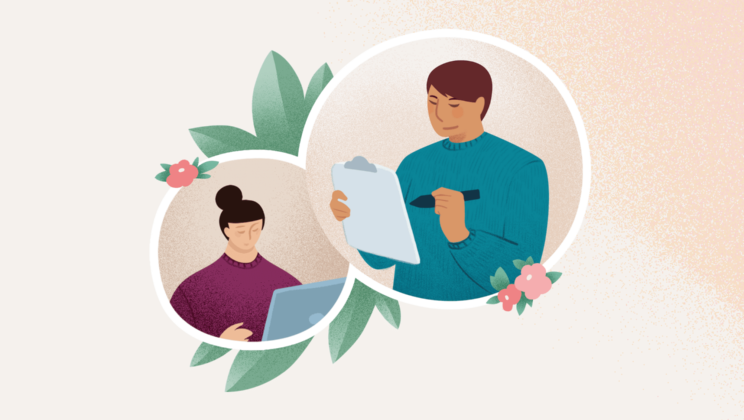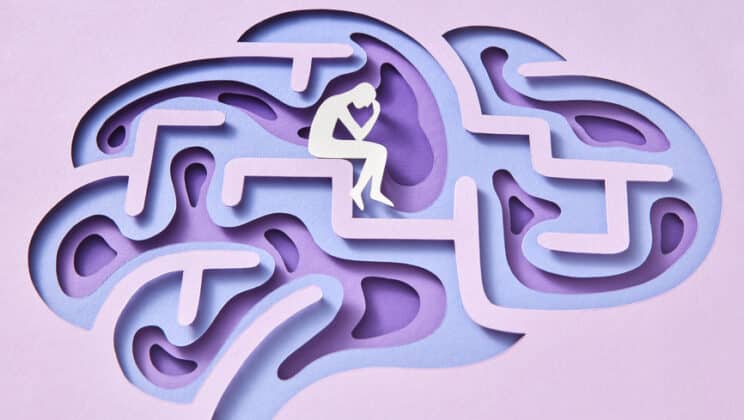Exposing Our Blind Spots: How to Tackle Unconscious Bias as a Therapist
November 19, 2019
Editor's note: This article contains a reference to an offensive, racist word.
What do you think of when you hear the term “blind spot”?
What it evokes for me is that tricky area in my car where I’m not easily able to see other drivers. Because I know it exists, I take extra precautions to ensure I can navigate safely with the blind spot in mind – turning on my signals to alert nearby drivers, using my rearview and side mirrors, and taking an extra look over my shoulders.
We also have blind spots in our interactions with others, often called implicit, or unconscious, biases. Ohio State University’s Kirwan Institute for the Study of Race and Ethnicity defines implicit bias as “the attitudes or stereotypes that affect our understanding, actions, and decisions in an unconscious manner.” This means that as social beings, we have preferences toward certain people, and these preferences may be unintentional or unconscious. It also means we may hold negative beliefs about others in ways we’re not actively thinking about.
Research shows that as health care providers, our biases may predict our behavior more than we realize. When these biases remain unchecked, they can really impact our interpersonal interactions, in some cases leading to even more biased decision-making or unintentionally invalidating our clients’ experiences.
A personal example of unconscious bias
I remember being one of two Asian kids in my elementary school of about 200 students in a small town in Middle America. The other Asian kid was my older brother.
Later, another Vietnamese student, Thien*, became my classmate. Thien spoke limited English and was, understandably, having a tough time adjusting at school. He struggled with his schoolwork and didn’t connect with other students. My teachers didn’t know how to help him, so they asked me to do so. They thought that if I spoke with him, helped him with his homework, and befriended him that his situation would improve. While my attempts started out well enough, unfortunately, it was all downhill from there.
At first, it was just the occasional joke. Thien would laugh at my imperfect Vietnamese and poke fun at how I pronounced certain words. He would get frustrated with me for being unable to explain math problems in Vietnamese, and I would get mad at him for not understanding the homework despite my repeated attempts to explain it. I missed out on time with friends and dreaded going to school knowing I’d be stuck with him all day. One day a classmate asked me, “Why do you spend all day with the gook?” At the time, I think I was too embarrassed about being stuck with Thien to be mad at the other student or know that the slur was also an insult toward me.
I resented Thien, and I suspect the feeling was mutual. In hindsight, I see how unfair this was to both of us. Thien, an immigrant student, struggled to understand English at a school that lacked the resources to support him, all while undoubtedly dealing with his peers’ racist comments. And as a Vietnamese-American student tasked with the role of tutor and a source of support for Thien, I had to upend my life at school to help another student in ways the school could not.
Looking back now, I realize that I was never angry at my teachers, the principal, or my school for putting me in that situation. I was only angry at Thien. In their minds, the arrangement with Thien and I could be a mutually beneficial and creative solution to a unique “problem.”
Steps therapists can take to address blind spots
The situation at my elementary school isn’t so different from scenarios therapists encounter in our work with clients. Providers, much like my former teachers, mean well. We have good intentions and try to foster solutions to problems. But we all have blind spots, or implicit biases and stereotypes. And when we act without taking these blind spots into account, we actually may be hurting more than helping.
My school teachers’ blind spots included the assumption that having another Vietnamese-speaking student to help Thien would be mutually beneficial. They didn’t consider Thien’s or my preferences, nor did they consult or collaborate with our parents or other adults from the Vietnamese community. Their actions were based on what they thought would help, from their own perspectives. As therapists, we unintentionally do this when we generalize a client’s health narrative based on a particular identity such as race or gender; when we make assumptions about sexual practices or avoid asking altogether; or when we persist with an intervention without considering whether it aligns with our clients’ customs, preferences, or practices.
This is our implicit bias at work. As therapists, there are aspects of our clients’ lives we are unaware of or unable to easily understand because we’re limited and shaped by our own experiences. Think of implicit bias in therapy like the blind spots that are present when driving. They’re there, but we don’t always see them clearly. But because we know that they are there, we can identify them and take intentional steps (like that extra over-the-shoulder look when driving) to mitigate their impact.
The following are eight key steps to mitigate your own blind spots and their influence on your work with clients.
1. Identify your cultural blind spots and areas of inexperience
In addition to trying to understand the impact of marginalization and discrimination on cultural groups that have been historically dismissed, work to identify your individual blind spots. For example, are you failing to consider the role that prayer plays in your client’s life due to your own religious or spiritual beliefs? Are you unintentionally minimizing the added stress that your trans client experiences daily as a result of cisnormativity? Psychologist Pamela Hays’ Addressing Model is one example of a framework you can use to raise awareness of your cultural influence blind spots.
2. Take the Implicit Association Test (IAT)
The IAT aims to highlight potential attitudes and beliefs you may hold about people based on certain characteristics like age or skin tone. You may be unaware of these biases or perhaps embarrassed or ashamed to acknowledge them, which can lead to avoidance of learning more and can hinder self-growth.
3. Form a consultation and accountability group
Start a group with other therapists and work to build trust and connection with each other. Make it a known priority of the group to deeply examine implicit biases and explore the impact they could have in therapy. Focusing on this explicit goal increases the likelihood that you’ll follow through on it, despite any feelings of embarrassment or shame. Let the group know if you’re willing to have others bring up your potential blind spots. They may see things you miss and can offer a different perspective. Challenge each other respectfully.
4. Consider incorporating the Cultural Formulation Interview (CFI) into your initial client intake or during a follow-up session
The CFI was created to help clinicians gather information about clients with an emphasis on understanding their health narratives and histories from a cultural lens. Questions on the CFI can aid in having the client describe the concern from their viewpoint, elicits their perspectives on the cause(s) and context for the concern, and promotes a more culturally collaborative relationship. (For example, how does the client view the role of the therapist from the perspective of their cultural identities?)
5. Create a culturagram to better understand your client’s family context
The culturagram is a visual tool that can help clinicians to better understand clients’ familial and cultural influences. It examines factors such as reasons for relocation, language spoken at home, the impact of trauma and crisis events, and the influence of client values about education, work, and family.
6. Consider reading Blindspot by psychologists Mahzarin R. Banaji and Anthony G. Greenwald
The authors explain unconscious bias and examine how social groups and social identities (such as social class, age, sexual orientation, and social networks) influence so many of our interactions and perceptions, and that the power of our biases are often unknown to us.
7. Seek out and attend workshops and seminars on unconscious bias
Remind yourself that the work of identifying and lessening the impact of implicit bias is an ongoing process. Treat it as a lifelong journey and not an endpoint.
8. Engage in and consider initiating dialogue about implicit bias with your coworkers or other therapists
Help normalize conversations about implicit bias and the reality that we all have them. If you work as part of a larger team or health care system, seek out leadership support in hosting trainings on implicit bias. If you’re a leader or program decision maker, incorporate this work more systemically by reducing barriers to receiving training on implicit bias. Be a model for identifying your blind spots and fostering a psychologically safe space for others to do the same.
*Name has been changed.
CONTACT US
If you want help connecting with a therapist or mental health coach, Lyra can assist you. You can get started today if Lyra is offered by your employer. Sign up now.
If you are a mental health professional and would like to explore joining the Lyra network, learn more about how we work with providers and apply today.
And check in frequently here or follow us on Facebook, LinkedIn, and Twitter for more insights into optimal well-being.
DISCLAIMER
The content of this blog is not intended to be a substitute for professional medical advice, diagnosis, or treatment.
Learn more about a rewarding mental health therapist career with Lyra.
Author
William Hua, PhD
William Hua, PhD is a clinical health psychologist and associate clinical professor who practices and teaches in San Francisco, CA. He has a passion for integrated behavioral health, Acceptance and Commitment Therapy (ACT), and applying diversity, equity, and inclusion practices to his work with clients and in his approaches to teaching.
Explore additional blogs

Mental health treatment
Therapist POV: Lyra’s Alcohol and Substance Use Care Innovations

Mental health conditions
Debunking Common Myths About Mental Health

Mental health treatment
What Is Evidence-Based Therapy?
If only there was a way to figure out who was likely to use the most up-to-date scientific methods, while...